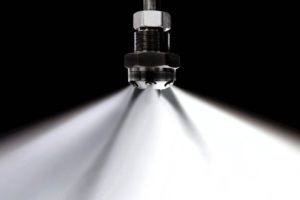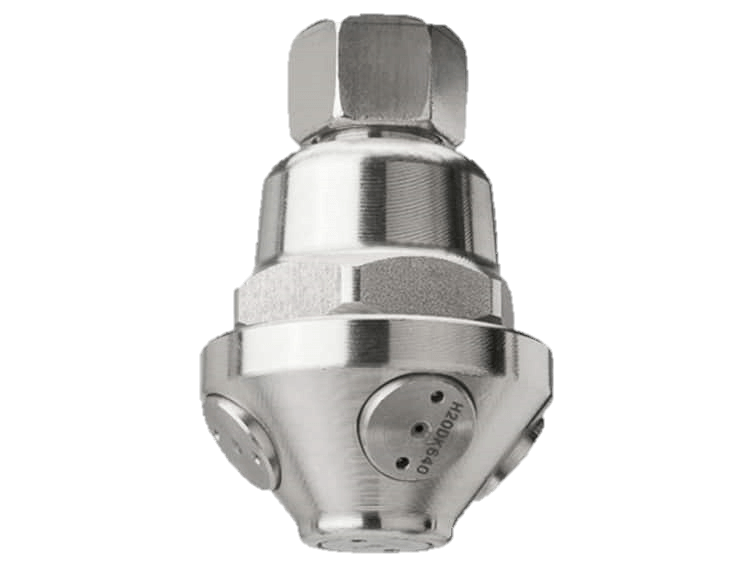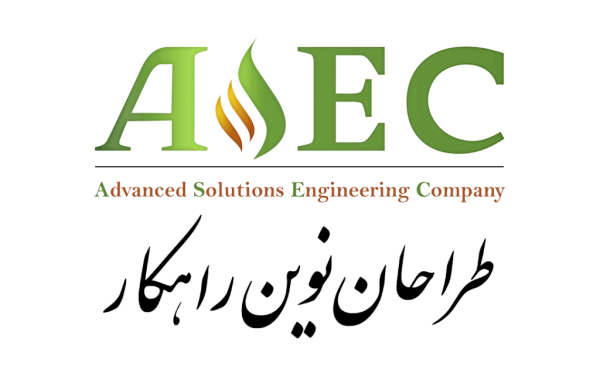A water mist system is a type of fire suppression system that uses high pressure and specialized nozzles to discharge water droplets from the nozzle in the form of very fine mist-like particles. This allows for a much smaller amount of water to be used to control a fire compared to a conventional sprinkler system.

The droplet size of water mist systems varies between 10 microns and 1000 microns. This small size reduces the amount of water needed for fire protection, helps the water evaporate faster and cool the area quickly, and lowers the oxygen level for better fire suppression, even in hard-to-reach areas.
Some features and specifications of the Watermist system are:
- According to NFPA 750 (Water Mist Fire Protection Systems Standard), corrosion-resistant piping materials such as stainless steel or copper-based pipes must be used in water mist systems.
- The water damage caused by water discharge in a water mist system is much less than that of a sprinkler or similar water spray system.
- In terms of working pressure, according to NFPA 75, water mist systems are divided into three categories: low-pressure systems (working pressure similar to sprinkler systems up to 1 bar), medium-pressure systems (working pressure between 12.1 and 34.5 bar) and high-pressure systems (pressure more than 34.5 bar up to usually 200 bar).
- The amount of water required in a water mist system is much less than the amount of water required for a sprinkler or similar water spray system. However, it should be noted that a certain volume of water is also discharged into the discharge area in this system, and the necessary precautions should be taken.
Types of water mist systems
Water mist systems can be classified in various ways. While all water mist systems share the common feature of generating very fine water droplets to combat fires, there is considerable diversity among them.
Water mist systems can be used for one or more of the following purposes:
- Extinguishing fires: This is the primary purpose of water mist systems. The fine water droplets are able to absorb heat and smother the fire, effectively extinguishing it.
- Suppressing fire or significantly reducing the heat release rate: This is another important function of water mist systems. The fine water droplets can cool the fire and reduce the amount of heat it produces, making it easier to control.
- Controlling fire or limiting the size of the fire and the temperature of the ceiling: Water mist systems can also be used to control the spread of a fire and prevent it from growing larger. The fine water droplets can cool the surrounding area and prevent the fire from reaching combustible materials.
- Controlling temperature and cooling: Water mist systems can also be used to control temperature and cool an area. The fine water droplets can evaporate and absorb heat, cooling the area down.

The NFPA 750 standard defines several methods for using water mist systems, which are explained below. As can be seen, these methods are very similar to those used for gas systems, as the two systems have many similarities in how they protect against fire.
- Local Application System: This system is used to protect a specific equipment or area within a larger space or in an open area. For example, consider protecting a printing machine inside a large warehouse. In this method, the extinguishing agent is discharged directly onto the equipment or area to be protected.
- Total Flooding System: In this system, an entire enclosed space or compartment is protected simultaneously. In a total flooding water mist system, open nozzles are installed in a grid pattern inside the room so that the water droplets evenly cover the entire volume of the area.
- Zoned Application System: In this system, the design is such that it protects a portion of a larger enclosed room. This system is typically used where the amount of water required to protect an entire enclosed space using total flooding (e.g., with a deluge system) is not readily available. This system requires the installation of an auxiliary fire detection system to accurately locate the fire.
- Occupancy Protection Systems: In this system, automatic water mist nozzles (similar to automatic sprinklers) are used throughout a building or parts of it to control, suppress, or extinguish a fire.
Some water mist systems use only water and a high-pressure pump to generate fine water droplets. Others use air or nitrogen in addition to water to atomize the water. This helps to produce smaller water droplets, but due to the nitrogen cylinders required, it is typically only used in small areas. The figure below shows an example of this type of water mist system.

Applications of Water Mist Systems
Water mist systems can be used to protect a wide variety of spaces and equipment from fire. According to the NFPA 750 standard, water mist systems can be effectively used in fires involving flammable liquids (Class B) and ordinary combustible materials (Class A).
Fire Class Definitions:
- Class A: Fires involving ordinary combustible materials, such as wood, paper, and cloth.
- Class B: Fires involving flammable liquids, such as gasoline, oil, and grease.
- Class C: Fires involving energized electrical equipment.
Researches have shown that small droplets (less than 400 microns) are necessary to extinguish Class B fires. Larger droplets can be effective for protecting combustible solids (Class A). Water mist systems have also been proven effective for protecting some electrical equipment (Class C).
Some of the areas where water mist systems can be used to control fire include:
- Areas where flammable or combustible liquids are stored
- Cable tunnels and trenches
- False floors in computer and server rooms
- Electrical equipment rooms
- Telecommunications facilities
- Hotels and similar areas
- Museums
- Light aircraft and helicopter hangars
- Educational spaces
- Tunnels
- machinery rooms
According to the NFPA 750 standard, water mist systems cannot be used in the following areas:
- Reactive metals such as lithium, sodium, potassium, magnesium, titanium, zirconium, uranium, and plutonium
- Metal alkoxides, such as sodium methoxide
- Metal amides, such as sodium amide
- Carbides, such as calcium carbide
- Halides, such as benzoyl chloride and aluminum chloride
- Hydrides, such as lithium aluminum hydride
- Oxyhalides, such as phosphorus oxybromide
- Silanes, such as trichloromethylsilane
- Sulfides, such as phosphorus pentasulfide
- Cyanates, such as methylisocyanate
Water mist systems should also not be used for direct application to liquefied gases stored by cryogenic methods (such as liquefied natural gas).

